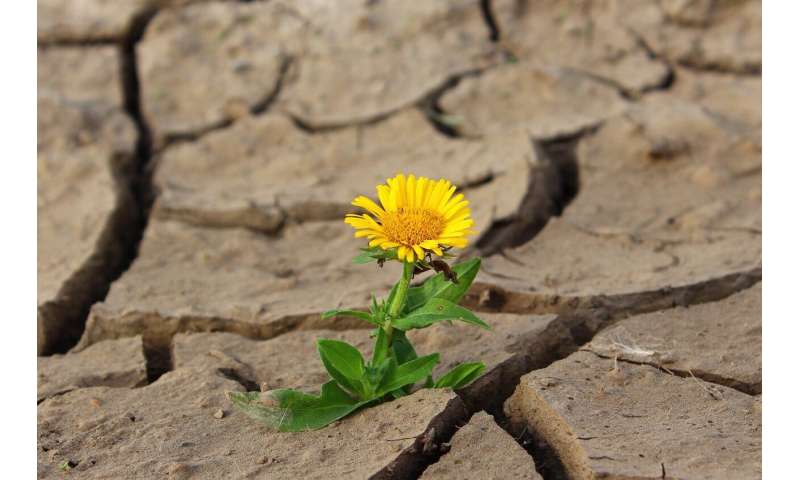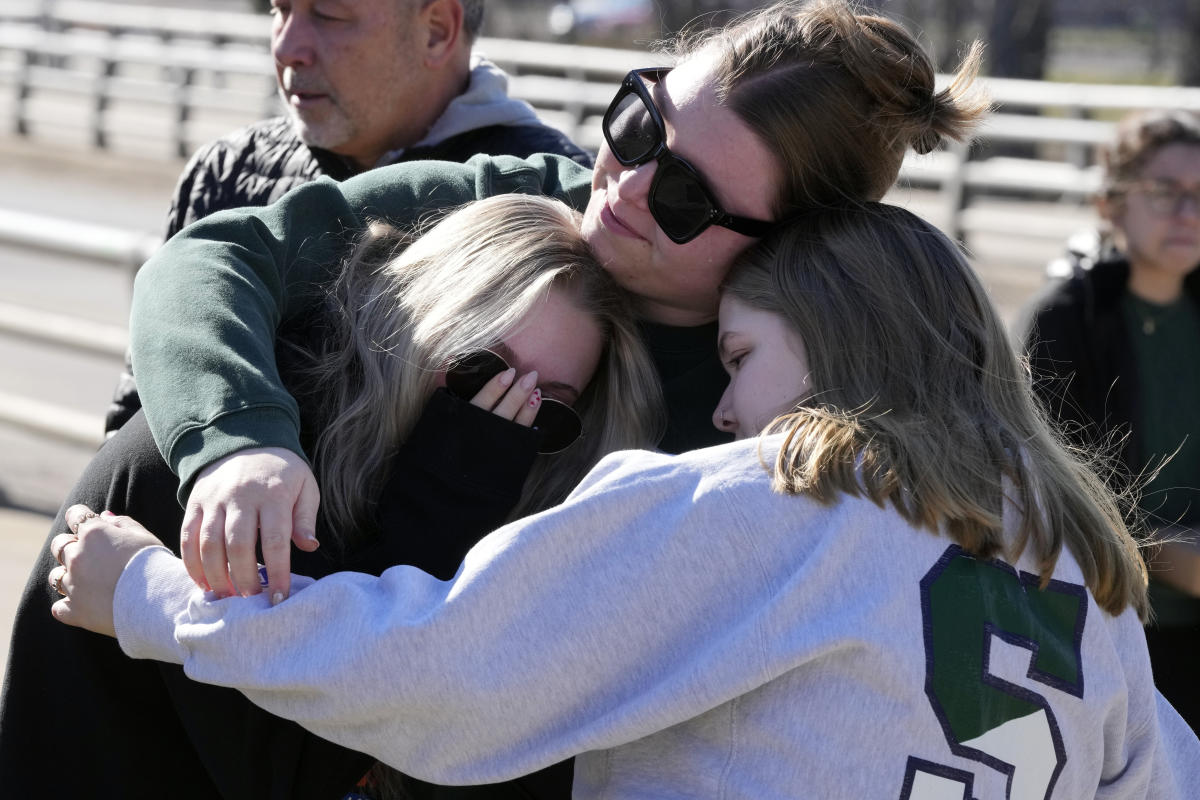#Climate study looks at humans’ exposure to extreme temperatures during 21st century
“#Climate study looks at humans’ exposure to extreme temperatures during 21st century”

Denver is known for its relatively mild climate and its four distinct seasons. It’s also known for its temperature fluctuations over the course of a day or even hours. But what does that mean for the city’s residents—and for that matter, the rest of the inhabitants of the continental United States when it comes to temperature extremes?
That’s what Ashley Broadbent wanted to know. Specifically, he wanted to know how populations throughout the United States will experience heat and cold during the 21st century.
So, Broadbent, an assistant research professor in Arizona State University’s School of Geographical Sciences and Urban Planning, used state-of-the-art modeling tools to analyze how three key variables would affect human exposure to extreme temperatures from the beginning of this century to its end.
He and his collaborator Matei Georgescu, an associate professor in ASU’s School of Geographical Sciences and Urban Planning, concentrated on the following three key factors: climate change brought about by greenhouse gas emissions; urban-development induced impacts arising from the growth of cities; and population change in individual cities.
The paper, “The motley drivers of heat and cold exposure in 21st century U.S. cities,” is published online in the “Proceedings of the National Academy of Sciences.” It is the first study of its kind to consider population-weighted heat and cold exposure that directly and simultaneously account for greenhouse gas and urban development-induced warming.
To describe how these three variables would affect temperatures, and in turn populations, Broadbent, Georgescu and co-author Eric Scott Krayenhoff, assistant professor at the University of Guelph, Ontario, used a metric they dubbed “person-hours,” to describe humans’ exposure to extreme heat and cold.
“It’s an intuitive metric,” said Broadbent. For example, when one person is exposed to one hour of an extreme temperature that exposure equals one person-hour of exposure. Likewise, if 10 people are exposed to 10 hours of an extreme temperature that exposure equals 100 person-hours.
“I think this definition is more representative of what people experience, which is what this study is about versus a study that simply communicates temperature changes without any human element attached to it,” said Broadbent.
Overall, the researchers found that the average annual heat exposure at the start of this century in the United States was about 5.2 billion person-hours. Assuming a worst-case scenario of peak global warming, population growth and urban development, the annual heat exposure would rise to 150 billion person-hours by the end of the century, a nearly 30-fold increase.
“The combined effect of these three drivers will substantially increase the average heat exposure across the United States, but heat exposure is not projected to increase uniformly in all cities across the US,” says Broadbent. “There will be hotspots where heat exposure grows sharply.”
To that end, the researchers defined heat thresholds based on local city definitions, something previous studies have not done. Instead, prior studies have used fixed-temperature thresholds that may be inappropriate for some cities. Afterall, a 90 degree day in Phoenix feels much different than a 90 degree day in New York City, given relative humidity differences.
“It’s well-know that cities have locally defined thresholds where heat and cold cause mortality and morbidity,” explained Broadbent. “In other words, people die at different temperatures in different cities because what is extreme in one city may be normal in another.”
Importantly, areas of the United States where human exposure would increase the most is where climate change and population increase in tandem. Meanwhile, urban development has a smaller, yet non-negligible effect.
According to the results of the study, the largest absolute changes in population heat exposure are projected to occur in major U.S. metropolitan regions, such as New York, Los Angeles and Atlanta.
The study also finds the largest relative changes in person-hours related to heat exposure are projected to occur in rapidly growing cities located in the sunbelt, including Austin, TX; Orlando; and Atlanta.
“The increase in exposure is quite large if you look at it relative to the start of the century,” said Broadbent. “Some cities across the sunbelt, according to our projections, will have 90 times the number of person-hours of heat exposure.” For example, cities in Texas that see substantial population growth and strong GHG-induced climate warming could be markedly affected.
One way to prepare for increased heat exposure is to reduce greenhouse gas emissions on a global scale, which would reduce the number of hours people are exposed to extreme temperatures. Other options include localized infrastructure adaptation that provides buffering effects against rising temperatures such as, for example, planting trees, providing shade and cooling areas and constructing buildings using materials that absorb less heat.
Although the average temperature in the United States will be warmer in the future, the study finds that cold exposure will increase slightly compared with the start of the century, primarily because of population growth. “While there is a general decrease in the number of projected extreme cold events by the end of this century, the number of individuals exposed to extreme cold is projected to increase, as population growth means that the total number of person-hours of cold exposure will go up,” said Broadbent.
“Cold is currently more of a national health problem than heat, but our results suggest that by the end of the century heat exposure may become a larger health problem than cold exposure” said Broadbent. However, cold exposure will not disappear completely as the climate warms. In fact, according to one of the team’s simulations, Denver is projected to have more extreme cold at the end of the century compared with the beginning, according to the study.
“That’s the interesting thing about climate change. We know the average temperature is going to increase,” said Broadbent, “but we know less about how the extremes are going to change, and often the extremes are the most important part of our daily lives.”
“There are several takeaway messages from this work, but one of the central ones concerns the future resiliency of our cities,” said Georgescu.
“The successful steps taken will require holistic thinking that embraces contributions from urban planners, engineers, social scientists and climate scientists with a long-range vision of how we want our cities to be.
We therefore call on cities to start asking some very foundational questions regarding the projected exposure of their constituents to future environmental change. Is the work of the urban climate modeling community being integrated into their environmental adaptation plans? If so, how, and if not, why not?”
More information:
Ashley Mark Broadbent el al., “The motley drivers of heat and cold exposure in 21st century US cities,” PNAS (2020). www.pnas.org/cgi/doi/10.1073/pnas.2005492117
Climate study looks at humans’ exposure to extreme temperatures during 21st century (2020, August 17)
retrieved 17 August 2020
from https://phys.org/news/2020-08-climate-humans-exposure-extreme-temperatures.html
This document is subject to copyright. Apart from any fair dealing for the purpose of private study or research, no
part may be reproduced without the written permission. The content is provided for information purposes only.
If you want to read more Like this articles, you can visit our Science category.
if you want to watch Movies or Tv Shows go to Dizi.BuradaBiliyorum.Com for forums sites go to Forum.BuradaBiliyorum.Com




